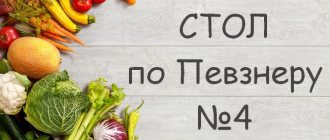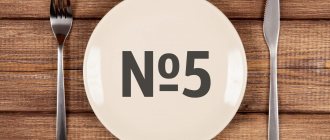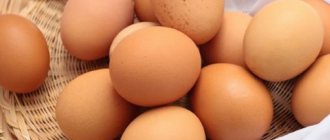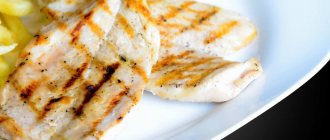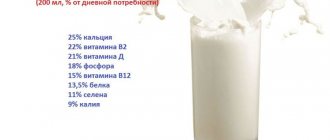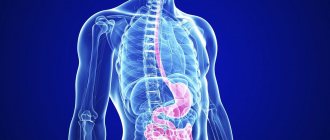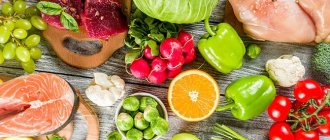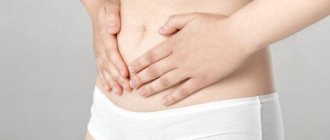Table No. 0
Recommendations for product types
Indications:
- undergone surgical interventions on the gastrointestinal tract
- rehabilitation of patients in the intensive care unit
- cerebrovascular accident
- after traumatic brain injury
- for patients with infectious diseases who are in serious condition.
Diet: 5–8 times a day
Duration of appointment: as needed
Nutritional features: this diet is designed to restore the patient’s vitality, replenish nutrients and increase the overall resistance of the body. The diet is very strict.
General tips for treatment tables on the Pevzner diet
When applying any diet, you should adhere to both individual rules and the general ones that M. Pevzner followed. These recommendations arose from his personal experience, as well as concepts as a doctor.
Food options
- Season food only with salt and not hot pepper. Any other spices are harmful to the body and can slow down recovery.
- Limit consumption of fried foods. Fried food is evil for the whole body. If you cannot do without it, you should fry food only in high-quality butter.
- Constant control of the dishes consumed, as well as their composition. Each meal should be accompanied by recording the amount of fats, proteins and carbohydrates, as well as mineral salts.
- vitamins and mineral salts should play an important role . You can get them from fresh berries, organic fruits, and vegetables. But it is worth considering that if you have problems with the gastrointestinal tract, you should not use them. Freshly squeezed juices are best.
Table No. 1
Recommendations for product types
Indications:
- peptic ulcer of the stomach and duodenum in the acute stage and unstable remission;
- acute gastritis;
- chronic gastritis with normal and high acidity in the stage of mild exacerbation;
- gastroesophageal reflux disease.
Diet: 4–5 times a day
Duration of appointment: at least 2–3 months
Nutrition Features:
Dishes are served in a semi-liquid or jelly-like form, warm; meat dishes and potatoes are cooked without frying. Limit the content of table salt.
Table No. 1a
Modification of the main table with a strict gentle diet that protects the gastric mucosa. This diet involves eating food in liquid, mushy and jelly-like form.
Indications:
- stomach and duodenal ulcers (severe exacerbation);
- exacerbation of chronic gastritis with severe pain;
- condition after gastrointestinal bleeding (after a strict gentle diet).
Diet: 5–6 times a day
Appointment period: several days
Recommended: milk, mucous cereal milk soups with butter; liquid, pureed, milk porridges; soft-boiled eggs or steam omelettes; steam soufflés from lean varieties of fish and meat; unsalted butter or olive oil, cream; berry, fruit (non-acidic) and milk jelly, carrot, fruit juices, rosehip decoction, weak tea with milk.
Salt is limited to 5–8 g, liquid - to 1.5 liters. Additionally, vitamins A, C, and group B are prescribed.
Table No. 1b
Prescribed to ensure a smooth transition from a strict gentle diet to a basic diet.
Indications:
- subacute phase of peptic ulcer and exacerbation of gastritis.
Diet: 4–5 times a day
Appointment period: several days
Nutritional features and products:
The food is prepared in a puree form, 75–100 g of crackers from premium white bread, meat and fish in the form of cutlets, quenelles, and meatballs are added. More often they give pureed milk porridges. Milk and cereal soups.
Sample diet menu No. 15.
- First breakfast: cottage cheese with sour cream, ham, butter, milk porridge, tea.
- Second breakfast: scrambled eggs, fried meat with potatoes, salad, fruit and berry juices, dry hematogen biscuit.
- Lunch: chopped herring, borscht in meat broth with sour cream, fried meat, buckwheat porridge, cake, fruit, juice.
- Dinner: cheesecakes, rice pudding with sour cream, berry jelly, milk.
- At night: yogurt, cake.
A medical diet is prescribed only by the attending physician , who has full knowledge of the medical history of a particular patient.
Table No. 3
Recommendations for product types
Indications:
- chronic diseases and functional bowel disorders accompanied by constipation.
Diet: 4–5 times a day
Duration of appointment: unlimited
Nutrition Features:
Food is prepared mostly unchopped, boiled in water or steamed, or baked. Vegetables and fruits are consumed raw or boiled. The diet includes cold first and sweet dishes and drinks.
Recommendations and prohibitions for the 1st table
Soup-pre is easily over-poisoned
When organizing dietary meals “table 1”, you must adhere to two basic rules:
- Strictly and without deviation follow the nutritional principles defined by the diet.
- Stick to a basic list of permitted and prohibited products.
Such symbiosis in the organization of diet helps to significantly reduce the mechanical, chemical and thermal load on the gastrointestinal tract, which contributes to the accelerated treatment of existing ailments. For example, a well-organized first table increases the rate of regeneration of affected tissues, reduces existing inflammation and leads to normalization of the secretory-motor function of the stomach.
In this paragraph of the article, we will pay attention to the permitted and prohibited foods for dietary food “table 1”. The first group should include:
- From protein foods - all types of lean dietary meat (from rabbit to veal), low-fat fish, liver and tongues of animals, dishes from low-fat types of minced meat, steamed meat, eggs (but no more than two or three per day).
- From foods rich in carbohydrates - almost all vegetables (potatoes, cauliflower, greens, etc.), steamed or boiled, any fruits with a soft structure (baked apples, plums, pears), cereals, flour products for cooking, dried bread, cookies.
- From fatty foods - butter without salt and vegetable oils.
By the way, the consumption of dairy products is not prohibited. If desired, you can include any dairy product in your diet - from milk to cheese. The main thing is that it is not too fatty and is well accepted by the stomach in terms of absorption.
As for drinks, it is better to give preference to juices, decoctions, green tea, compotes and fruit drinks. Now that everything is clear about permitted food, let’s turn our attention to the list of prohibited foods. These include:
- any broths;
- fatty types of dishes (some types of fish, caviar, meat);
- mushrooms;
- cereal;
- canned food;
- products made from butter or puff pastry;
- coffee, cocoa and black tea;
- vegetables that are difficult to digest;
- soda of all types (from Narzan to lemonade);
- alcoholic drinks;
- sauces for food (mayonnaise, ketchup, etc.);
- any other food not included in the permitted list.
Important! Table 1 and its varieties “1a”, “1b” do not have any differences in terms of the food products used. These diets differ only in calorie content and duration of adherence.
Table No. 4
Recommendations for product types
Indications:
- acute and exacerbation of chronic intestinal diseases, accompanied by diarrhea (diarrhea)
Diet: 5 times a day
Appointment period: several days
Nutritional Features:
Mechanical, chemical and thermal irritants of the gastrointestinal tract are sharply limited. Products and dishes that stimulate the secretion of the digestive organs, the processes of fermentation and putrefaction in the intestines are excluded. Dishes are liquid, semi-liquid, pureed, boiled in water or steamed. Very hot and cold dishes are excluded.
Table No. 4a
Indications:
- colitis with a predominance of fermentation processes.
Diet: 5 times a day
Appointment period: several days
The composition is the same as in diet No. 4, but carbohydrate-rich foods (porridge, bread, sugar) are sharply limited and the protein content is increased due to meat dishes and pureed cottage cheese.
Table No. 4b
Indications:
- chronic colitis in the attenuation stage of the disease.
Diet: 4–6 times a day
Duration of appointment: from 1–2 months to several years
Diet features:
In contrast to the main diet, snacks are allowed (mild cheese, doctor's sausage, pate, veal, soaked herring, jellied meat, jellied tongue) and sauces (meat, vegetable and fish weak broth with dill, parsley leaves, milk bechamel sauce with the addition of a small amount of sour cream, fruit sauces, cinnamon can be used).
All dishes are boiled or steamed, pureed, slimy, and served warm.
Table No. 4b
Indications:
- acute intestinal diseases during the recovery period as a transition to a balanced diet;
- chronic intestinal diseases during the period of exacerbation;
- chronic intestinal diseases without exacerbation with concomitant lesions of other digestive organs.
Diet: 5 times a day
Duration of appointment: several months
Nutrition Features:
This diet is prescribed to provide adequate nutrition in case of intestinal dysfunction to restore the function of other digestive organs. The diet is physiologically complete with limited salt intake and a slight increase in the amount of protein foods. It excludes foods that enhance the processes of putrefaction and fermentation in the intestines, activates its secretion, as well as the secretion of the pancreas and stomach. You need to prepare dishes by steaming, crushed, or baking or boiling.
What it is
A therapeutic (medical) diet is a diet compiled for a specific disease, taking into account the disorders (functional, metabolic, pathomorphological, enzymatic) that it causes in the body. Most often, it is one of the most important parts of the therapeutic course. Its goal is to create a favorable background for the use of medications and procedures, enhance their effect, and also provide all possible assistance. Sometimes it is prescribed for prophylactic purposes, to prevent or delay the exacerbation of chronic pathologies.
Basic diets for the treatment of various diseases were developed back in 1929 by Manuil Isaakovich Pevzner (1872-1952). This is a famous therapist, professor, organizer of the Research Institute of Nutrition of the Russian Academy of Medical Sciences, who stood at the origins of Soviet dietetics and gastroenterology. It was he who developed a system of 15 diets, which were called “healing tables,” classifying them according to the main groups of diseases. After his death, they were constantly supplemented and corrected, and letter subcategories appeared with more detailed clarification of diagnoses.
In 2003, the Department of Organization and Development of Medical Care and Sanatorium-Resort Affairs issued methodological recommendations entitled “Organization of clinical nutrition in medical institutions.” This is an official document that has become a significant breakthrough and a new revolutionary word in diet therapy. The old Pevzner power system was practically eliminated, although it formed the basis of the new standard. According to him, 15 numbered treatment tables were divided into only 5 groups.
Through the pages of history. Documents from the mid-20th century have been preserved (interrogation protocols) claiming that Pevzner conducted experiments on people in his treatment center. Some even called him a killer doctor.
Table No. 5
Recommendations for product types
Indications:
- chronic hepatitis with a benign and progressive course;
- liver cirrhosis without exacerbation;
- chronic cholecystitis;
- cholelithiasis;
- acute hepatitis and cholecystitis during the recovery period;
- other diseases accompanied by dysfunction of the liver and biliary tract.
Diet: 5 times a day
Duration of appointment: unlimited
Nutrition Features:
Dishes are mostly boiled or baked after pre-cooking. Food is prepared mainly in uncut form. Flour and vegetables for dressing are not fried, but dried.
Table No. 5a
Indications:
- acute hepatitis and cholecystitis;
- exacerbation of chronic hepatitis, cholecystitis, liver cirrhosis.
Diet: 5 times a day
Appointment period: several days
Nutritional features: nutrition is the same as with diet No. 5, but you should eat more protein-containing foods, limit foods containing fats and carbohydrates; dishes that enhance the processes of fermentation and putrefaction in the intestines, strong stimulants of bile secretion and substances that irritate the liver.
Dishes are prepared boiled, pureed, and served warm. Separate baked dishes of meat and fish, pre-boiled, without crust, are allowed.
Nutrition according to Pevzner in modern medicine
The above characteristics of the main therapeutic diets indicate that all of their types are successfully used for various diseases. However, in medical inpatient institutions a new nomenclature of dietary tables is currently in effect.
Although in general the characteristics of medical nutrition diets in medical institutions indicate that they are based on the works of Pevzner. The current classification of therapeutic diets is not so broad. The main options used in nutritional therapy are as follows:
- Main table - it replaces a row of Pevzner tables.
- Diet with mechanical and chemical sparing.
- High protein diet.
- Diet with a reduced amount of protein.
- Low calorie diet.
These diets use medicinal recipes from Pevzner tables.
Table No. 7
Recommendations for product types
Indications:
- acute nephritis in the recovery phase;
- chronic nephritis without exacerbation;
- nephropathy of pregnant women and other diseases requiring a salt-free diet.
Diet: 4–5 times a day
Duration of appointment: long
Nutritional features: the diet is complete, practically no different from the diet of a healthy person. Patients are advised not to abuse protein foods (up to 0.8–0.9 g/kg) and somewhat limit salt (7–8 g/day).
Table No. 7a
Indications:
- acute and chronic nephritis in the acute stage;
- terminal chronic renal failure.
Diet: 5 times a day
Appointment period: several days
Nutritional features: modification of the basic diet with the complete exclusion of salt, severe restriction of fluid and protein.
Table No. 7b
Indications:
- recovery period after acute kidney inflammation;
- CRF.
Diet: 5 times a day
Duration of appointment: from several days to several months
Nutritional features: modification of the basic diet with restriction of salt and protein, is transitional from No. 7a to No. 7
Tables No. 7v and No. 7d
Prescribed to persons with severe nephrotic syndrome and those on hemodialysis, respectively.
They represent a modification of the basic diet with increased protein content.
Functions
A properly prescribed therapeutic diet performs the following functions:
- is part of the main therapeutic course;
- replaces other medications that have proven ineffective in treating the disease;
- creates a favorable background for greater effectiveness of other prescribed therapeutic agents;
- improves the patient's condition;
- promotes his speedy recovery;
- is the basis of spa treatment;
- serves as a preventive measure;
- delays the exacerbation of chronic diseases;
- prevents relapses;
- consolidates the positive result of the treatment course.
Today, doctors consider therapeutic diets an obligatory part of the treatment of absolutely any disease, from a harmless acute respiratory viral infection to serious systemic disorders of the body.
Table No. 8
Recommendations for product types
Indications:
- obesity as a primary disease or concomitant with other diseases that do not require special diets.
Diet: 5–6 times a day
Duration of appointment: long
Nutrition Features:
Reducing the caloric content of the diet due to carbohydrates, especially easily digestible ones. and, to a lesser extent, fats (mainly animal) with normal protein content. Restriction of free fluid, sodium chloride and appetite-stimulating foods and dishes. Increased dietary fiber content. Dishes are prepared boiled, stewed, baked. Use sugar substitutes for sweet foods and drinks.
Essence and basic principles
The author of this system is nutritionist M.I. Pevzner. Diets were developed to organize proper nutrition and speedy recovery of patients suffering from various diseases.
Each of them is called a “table” with an assigned number (from 1 to 15). Some diets have several variations, indicated by letters. There is also a zero table designed for the restoration of the gastrointestinal tract after surgical interventions.
The basic principle of all diets is that to determine the required amount of food, calorie counts are used (unit of measurement - kcal). This is due to the fact that many diseases cause weakness and a feeling of loss of strength, and to eliminate such ailments, the body must receive enough energy (through proper nutrition).
All menus contain foods that modern nutritionists consider harmful and recommend limiting or eliminating (white bread, refined rice, and so on). This is explained by the fact that coarse fibers from unprocessed products can injure the gastrointestinal tract in the presence of a number of diseases.
Diets do not differentiate between healthy and unhealthy foods. The selection of products is carried out based on the body's needs for calories and nutritional compounds, as well as the specifics of diseases (and conditions caused by them).
Pevzner's diets do not involve serious restriction of carbohydrates (compared to many modern nutrition systems). Even table No. 9, designed for patients with diabetes, includes cereals and flour products in the menu in significant quantities (however, all permitted products have a low GI index).
Table No. 9
Recommendations for product types
Indications:
- mild to moderate diabetes mellitus;
- establishing tolerance to carbohydrates;
- selection of doses of insulin or other drugs.
Diet: 5 times a day
Duration of appointment: sometimes for life
Dietary features: dishes are served boiled, baked, steamed, fried - to a limited extent.
Table No. 5. For diseases of the biliary tract and liver
Food should not be cold. Moderate salt restriction. Boiled, baked, stewed dishes. Fermented milk products, rye and bran bread, and dried wheat bread.
It is prohibited to eat fatty foods, including olives, lard, pork, tongue, kidneys, as well as legumes, baked goods, pickles, marinades and smoked meats, canned food, black coffee, cocoa, chocolate.
Companions to fatty dishes. 8 Foods That Lower Cholesterol Read More
Table No. 11
Recommendations for product types
Indications:
- tuberculosis of the lungs, bones, lymph nodes, joints with a mild exacerbation or its attenuation, with low body weight;
- exhaustion after infectious diseases, surgery, injuries.
Diet: 4–5 times a day
Duration of appointment: 1–2 months or more
Nutrition Features:
The diet has a high energy value with a high content of proteins, minerals and vitamins.
General information
If a person is sick, then, in most cases, he “bet” on drug treatment. However, the correct approach to treating any ailment should be based on an integrated approach. That is, in the treatment process, the medication regimen, the patient’s lifestyle, and, without a doubt, his diet are important. The Pevzner diet involves proper organization of nutrition during the treatment of various diseases. This nutritional system not only promotes healing, but also helps prevent relapses and avoid exacerbations. The article below will discuss the nutritional system developed by nutritionist Mikhail Pevzner and which helps modern doctors successfully heal various diseases.
